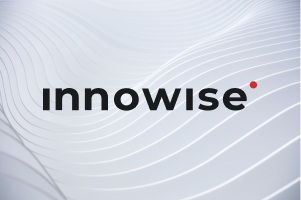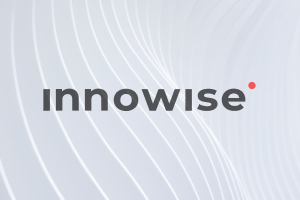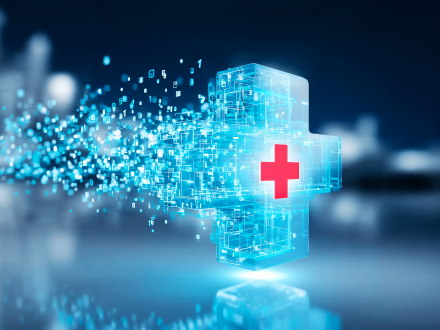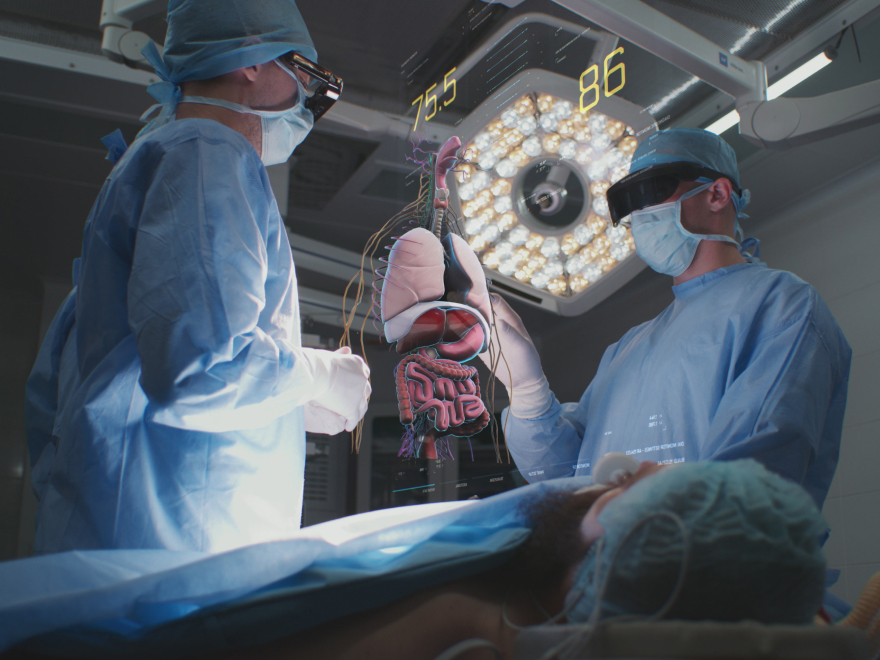Il tuo messaggio è stato inviato.
Elaboreremo la vostra richiesta e vi ricontatteremo al più presto.
Il modulo è stato inviato con successo.
Ulteriori informazioni sono contenute nella vostra casella di posta elettronica.

Selezionare la lingua


La mappatura dei dati in ambito sanitario è un processo di corrispondenza dei campi tra database di sistemi informativi diversi. In altre parole, la mappatura dei dati dà un senso a ogni connessione e a ogni crea un progetto dettagliato per tutti i dati sanitari all'interno di un ecosistema IT.
I dati sanitari provengono da varie fonti, come EMR o EHR, CRM medici dispositivi indossabili, sistemi di imaging medico e sistemi di fatturazione. Ognuna di queste fonti utilizza standard terminologici e di scambio dati diversi, il che può naturalmente complicare le cose. Ad esempio, un sistema radiologico può utilizzare DICOM e l'EHR può utilizzare HL7, oppure ospedali diversi possono codificare le procedure utilizzando sistemi diversi, come CPT e SNOMED CT. Queste variazioni rendono difficile l'integrazione e l'interpretazione dei dati medici.
Sfruttando la mappatura dei dati come parte del vostro sviluppo di software sanitario I fornitori possono collegare facilmente dati simili e trasformarli in uno standard unificato. Di conseguenza, le aziende sanitarie possono superare la frammentazione comune ai sistemi di dati nel settore e utilizzare in modo efficiente i dati per la cura dei pazienti.
Ottenere un maggiore controllo dell'ecosistema IT sanitario con la mappatura dei dati
La mappatura dei dati fa tipicamente parte del processo di migrazione dei dati nell'ambito di progetti più ampi. Nel settore sanitario viene applicata in diversi ambiti, ma ci sono alcuni scenari comuni.
Migrazione dei dati si riferisce a trasferire i dati da un sistema a un altroSpesso, quando si passa a un nuovo sistema, si aggiorna quello esistente, si passa al cloud o si effettua una trasformazione digitale. Durante la migrazione, la mappatura dei dati stabilisce connessioni tra i campi di dati di diversi sistemi IT, consente un trasferimento senza errori e aiuta a mantenere la coerenza dei dati tra le varie soluzioni.

Integrazione dei dati combina i dati provenienti da diverse fonti in un'unica posizioneche è un must assoluto per gli operatori sanitari che raccolgono dati operativi e di cura da diversi sistemi. La mappatura dei dati è una fase naturale dell'integrazione, in quanto collega i sistemi che utilizzano gli stessi dati e ne garantisce la coerenza e l'accuratezza.

Gli operatori sanitari hanno spesso bisogno di convertire i dati da un formato all'altroper integrare diversi sistemi o per facilitare l'uso e l'analisi dei dati. Con la mappatura dei dati sanitari è possibile comprendere le connessioni tra i dati presenti nei database, indipendentemente dalle modalità di archiviazione delle informazioni, e quindi procedere alla trasformazione in un formato unificato.

Quando si implementa la business intelligence nel settore sanitario, la mappatura dei dati aiuta a garantire che i dati provenienti da più fonti si allineino correttamente per l'analisi. Collegando diverse fonti di dati, si snellisce l'estrazione, la pulizia e la preparazione dei dati. In questo modo, gli strumenti di BI accedono a dati pronti per l'analisi e forniscono approfondimenti più accurati e fruibili.

Molte soluzioni di reporting utilizzano una terminologia e strutture di dati uniche, per cui le aziende mediche devono adattare i propri dati. Sfruttando la mappatura dei dati, i fornitori di servizi sanitari sincronizzare i propri dati con la terminologia e la struttura del reporting. Aiuta a definire quali dati sono necessari per specifici report e registri e semplifica questo processo.

Scambio elettronico di dati (EDI) automatizza lo scambio di documenti tra le aziende sanitarie - come gli ospedali e le compagnie di assicurazione, ottimizzando i flussi di lavoro e la gestione dei documenti. In questo caso, la mappatura dei dati specifica i dati utilizzati nei documenti, dove si trovano e come devono essere trasformati per adattarsi alla struttura dei dati richiesta dal software di destinazione.

Migrazione dei dati si riferisce a trasferire i dati da un sistema a un altroSpesso, quando si passa a un nuovo sistema, si aggiorna quello esistente, si passa al cloud o si effettua una trasformazione digitale. Durante la migrazione, la mappatura dei dati stabilisce connessioni tra i campi di dati di diversi sistemi IT, consente un trasferimento senza errori e aiuta a mantenere la coerenza dei dati tra le varie soluzioni.

Integrazione dei dati combina i dati provenienti da diverse fonti in un'unica posizioneche è un must assoluto per gli operatori sanitari che raccolgono dati operativi e di cura da diversi sistemi. La mappatura dei dati è una fase naturale dell'integrazione, in quanto collega i sistemi che utilizzano gli stessi dati e ne garantisce la coerenza e l'accuratezza.

Gli operatori sanitari hanno spesso bisogno di convertire i dati da un formato all'altroper integrare diversi sistemi o per facilitare l'uso e l'analisi dei dati. Con la mappatura dei dati sanitari è possibile comprendere le connessioni tra i dati presenti nei database, indipendentemente dalle modalità di archiviazione delle informazioni, e quindi procedere alla trasformazione in un formato unificato.

Quando si implementa la business intelligence nel settore sanitario, la mappatura dei dati aiuta a garantire che i dati provenienti da più fonti si allineino correttamente per l'analisi. Collegando diverse fonti di dati, si snellisce l'estrazione, la pulizia e la preparazione dei dati. In questo modo, gli strumenti di BI accedono a dati pronti per l'analisi e forniscono approfondimenti più accurati e fruibili.

Molte soluzioni di reporting utilizzano una terminologia e strutture di dati uniche, per cui le aziende mediche devono adattare i propri dati. Sfruttando la mappatura dei dati, i fornitori di servizi sanitari sincronizzare i propri dati con la terminologia e la struttura del reporting. Aiuta a definire quali dati sono necessari per specifici report e registri e semplifica questo processo.

Scambio elettronico di dati (EDI) automatizza lo scambio di documenti tra le aziende sanitarie - come gli ospedali e le compagnie di assicurazione, ottimizzando i flussi di lavoro e la gestione dei documenti. In questo caso, la mappatura dei dati specifica i dati utilizzati nei documenti, dove si trovano e come devono essere trasformati per adattarsi alla struttura dei dati richiesta dal software di destinazione.

Dati di scarsa qualità costa alle organizzazioni una media di $12,9 milioni all'anno secondo Gartner. E i problemi relativi ai dati si accumulano, portando a ecosistemi di dati ingarbugliati e a imprecisioni che influenzano il processo decisionale. La mappatura dei dati può aiutare a risolvere molti di questi problemi e portare i seguenti vantaggi.
Poiché la mappatura dei dati è parte integrante dell'interoperabilità, aiuta gli operatori sanitari ad accedere alle informazioni complete sulle cure, anche se sparse in sistemi diversi. Ciò consente di risparmiare tempo nella ricerca dei dati, di migliorare il coordinamento delle cure e di ridurre gli oneri amministrativi.
Grazie all'abbinamento di dati provenienti da fonti diverse, gli operatori sanitari possono comprendere meglio il profilo sanitario di un paziente, comprese le allergie, i farmaci e i trattamenti precedenti. Questo porta a rinvii più rapidi, ritardi ridotti al minimo e migliori risultati per i pazienti.
L'inserimento manuale dei dati è comune nel settore sanitario e spesso porta a errori, duplicati o problemi di fatturazione. La mappatura dei dati può favorire il trasferimento dei dati tra sistemi diversi, alleggerendo il carico di lavoro del personale medico. Gli studi dimostrano che funziona: 30% dei fornitori dichiara che le piattaforme di dati aggregati li hanno aiutati a risparmiare sui costi e gestire meglio la propria forza lavoro.
Con un'adeguata mappatura dei dati, le organizzazioni sanitarie possono garantire che i record siano strutturati in modo coerente e gestiti in conformità con i quadri normativi come HIPAA e GDPR. Organizzando e consolidando i dati in un'unica piattaforma, le organizzazioni possono garantire l'accuratezza dei dati e mantenere più facilmente i requisiti di sicurezza per le informazioni sanitarie protette.
Adottando la mappatura dei dati, le organizzazioni sanitarie possono eseguire un'analisi completa dei dati e identificare le aree di ottimizzazione delle risorse. Queste informazioni aiutano ad allocare il personale e le attrezzature in modo più efficiente, a migliorare le prestazioni del personale e a massimizzare l'uso delle risorse.
I ricercatori possono utilizzare la mappatura dei dati per creare set di dati completi e condurre studi clinici e ricerche su larga scala. In questo modo possono identificare le tendenze dei modelli di malattia, prevedere il fabbisogno di risorse e sviluppare strategie sanitarie più efficaci.
"Nella mia esperienza, i fornitori di servizi sanitari con ecosistemi di dati complessi hanno assolutamente bisogno di una solida mappatura dei dati, soprattutto quando sono in fase di trasformazione digitale. Ho visto di persona quanto sia essenziale ottimizzare il flusso dei dati tra i vari sistemi per garantire accuratezza e coerenza. Io e il mio team abbiamo una profonda conoscenza dei processi sanitari e possiamo aiutare la vostra azienda a mappare i dati sanitari, gettando le basi per progetti IT più complessi e innovativi".

Aleh Yafimau
Responsabile della consegna
Il software EHR di Epic è utilizzato da oltre 305 milioni di utenti in tutto il mondo. Alla base di uno scambio di dati senza soluzione di continuità c'è la mappatura dei dati. Questa tecnologia consente agli operatori sanitari di scambiare informazioni senza sforzo e di fornire un'assistenza migliore e personalizzata.
Merative, precedentemente nota come IBM Watson Health, applica la mappatura dei dati per integrare i dati dei pazienti tra le varie istituzioni per approfondire la ricerca. Garantisce inoltre l'accuratezza e la standardizzazione dei dati per un'analisi accurata dell'intelligenza artificiale, che porta a decisioni sanitarie migliori.
La piattaforma HealthShare di InterSystems gestisce oltre 1 miliardo di cartelle cliniche in tutto il mondo e risolve il problema dei silos di dati nella sanità. Utilizzando la mappatura dei dati, HealthShare integra e aggrega senza problemi le informazioni sui pazienti provenienti da diverse fonti, come le cartelle cliniche elettroniche e i sistemi di imaging.
Redox è specializzata nell'integrazione dei dati sanitari, collegando organizzazioni, applicazioni e fonti di dati. Sfrutta la mappatura dei dati per ottimizzare lo scambio di dati e garantire un accesso e uno scambio sicuro dei dati dei pazienti. Inoltre, Redox facilita lo scambio di dati bidirezionale in tempo reale tra più ambienti e consente la trasformazione degli standard dei dati legacy.
La mappatura dei dati è fondamentale per gestire la grande quantità di dati sanitari generati. Grazie alla mappatura dei dati, gli operatori sanitari possono fornire un'assistenza più informata, ridurre gli errori e i costi operativi e personalizzare i piani di trattamento.
Tuttavia, un'implementazione di successo richiede un'attenta pianificazione e l'esperienza. Il nostro team di esperti può aiutarvi a superare le complessità del processo e a garantire una transizione senza soluzione di continuità. Se siete interessati a saperne di più sulla mappatura dei dati, sui suoi potenziali vantaggi per la vostra azienda e su come possiamo aiutarvi a sfruttarla per un cambiamento positivo, non esitate a mettervi in contatto con noi.
In breve, la mappatura dei dati nel settore sanitario consiste nel collegare i campi tra i database dei sistemi. La mappatura è una fase essenziale della migrazione e dell'integrazione dei dati e viene utilizzata per scambiare informazioni tra due o più sistemi, come EMR, EHR o applicazioni per i pazienti. Inoltre, consente di effettuare analisi basate su set di dati, analisi predittive, test sui farmaci, ricerche sui pazienti e altro ancora.
La mappatura dei dati semplifica l'aggregazione delle informazioni da più fonti, facilitando il coordinamento delle cure tra i medici e semplificando il processo decisionale clinico. Quando non è necessario inserire manualmente i dati in più sistemi, si riducono i rischi di perdita di dati, di errori medici, di record mancanti o duplicati e di problemi di sicurezza e conformità.
La mappatura dei dati sanitari, se eseguita correttamente, non compromette la sicurezza e la conformità normativa. Ciò richiede la crittografia dei dati mediante algoritmi robusti e la loro archiviazione in un ambiente protetto, con accesso limitato al solo personale autorizzato. Per soddisfare le normative sulla privacy come l'HIPAA e il GDPR, le aziende sanitarie che desiderano implementare la mappatura dei dati devono adottare misure di protezione aggiuntive, come verifiche regolari e formazione del personale sulle migliori pratiche di sicurezza dei dati.














Il tuo messaggio è stato inviato.
Elaboreremo la vostra richiesta e vi ricontatteremo al più presto.

Iscrivendosi si accetta il nostro Informativa sulla privacy, compreso l'uso dei cookie e il trasferimento dei vostri dati personali.